Spider Solitaire Rules: How to Play
Anna | February 4, 2025
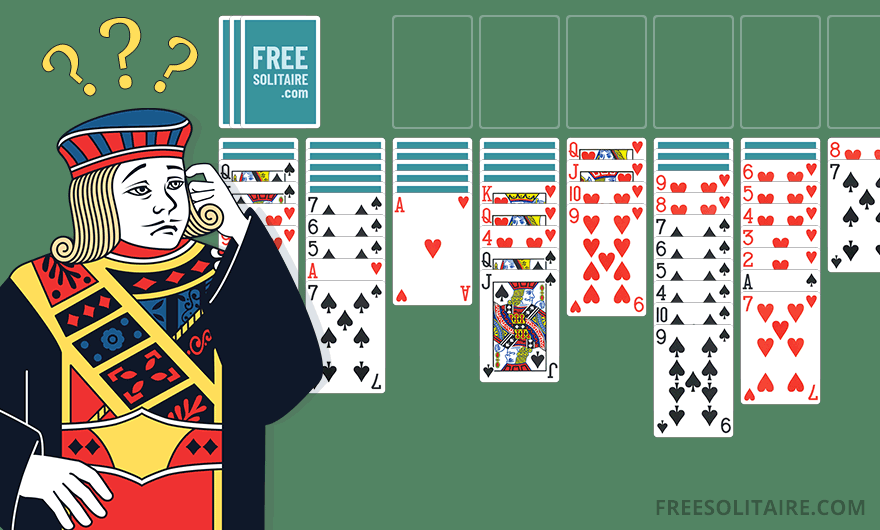
Are you completely new to Spider Solitaire or has it just been a while since your last shuffle? No worries, I am here to guide you through it step by step! I’ve been playing Spider Solitaire since my days as an office clerk in the late 1990s... when coffee breaks often turned into much longer game sessions (probably when I should have been working). And guess what? The game is just as fun and rewarding now as it was back then!
Let’s kick things off with some important terms. Every game has its own lingo and Spider Solitaire is no exception. As you can see in Figure 1, I’ve labeled the items to give a clear overview.
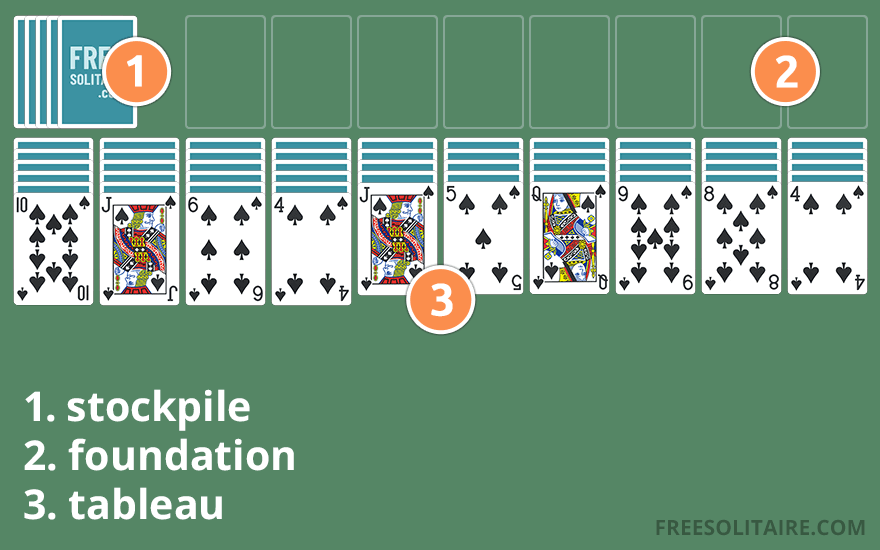
- Tableau: The main playing area with 10 columns. The first 4 columns start with 6 cards and the rest have 5 each. Only the top card in each column is face-up.
- Stockpile: Spider Solitaire is played with 2 decks, totaling 104 cards. Since 54 cards are already dealt to the tableau, the remaining 50 cards are placed in the stockpile, divided into 5 separate deals.
- Foundation: These are 8 empty spots in the top-right corner of the board, where completed sequences of cards are placed. You’ll learn more about this later in the guide.
Objective and Difficulty Levels
The goal of Spider Solitaire is simple: arrange all 104 cards into descending sequences from King to Ace, all in the same suit. When a sequence is completed the game automatically moves it to one of the foundations. The game is won when all 8 foundations are filled. Depending on the difficulty level you choose, the challenge increases:
- 1 Suit (Absolute beginner): Only Spades are used, making this the easiest version.
- 2 Suits (Intermediate): Only Spades and Hearts are used. You can stack cards of different suits in descending order but only same suit groups can be moved.
- 4 Suits (Advanced): In this level all 4 suits are used and this requires careful planning and precision.
Now, let’s take a look at how we can build sequences in each of these levels.
Building Sequences on the Tableau
First, it’s important to know how to move the cards. You can swipe them into position or click on a card and it will move automatically to the best spot (if there is any).
Uncovering hidden cards and finding the ones you need for your sequences is key to progressing in the game. In the 1-suit version, this process is made simpler since all the cards belong to the same suit. Let’s look at a practical 1-suit game example:
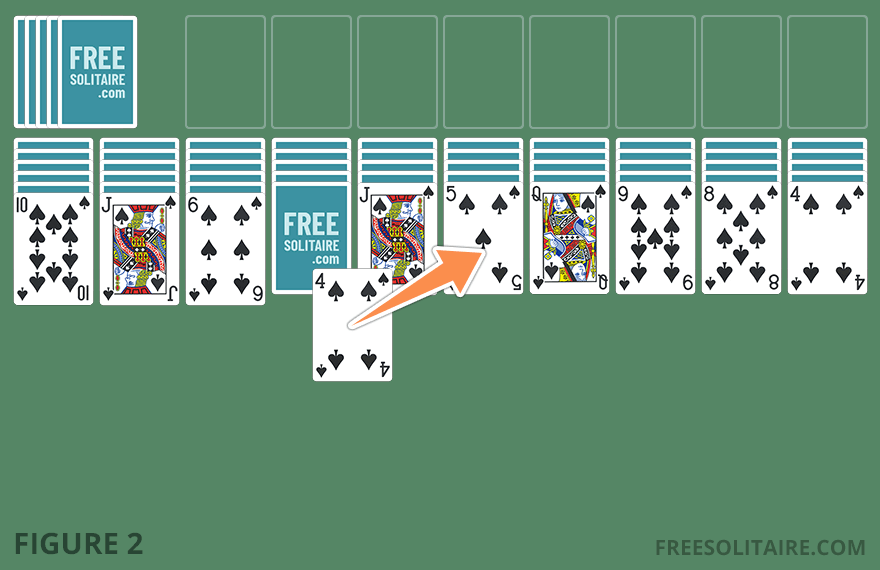
As you can see in Figure 2, I moved a black 4 to a black 5 as my first move in creating a descending sequence.
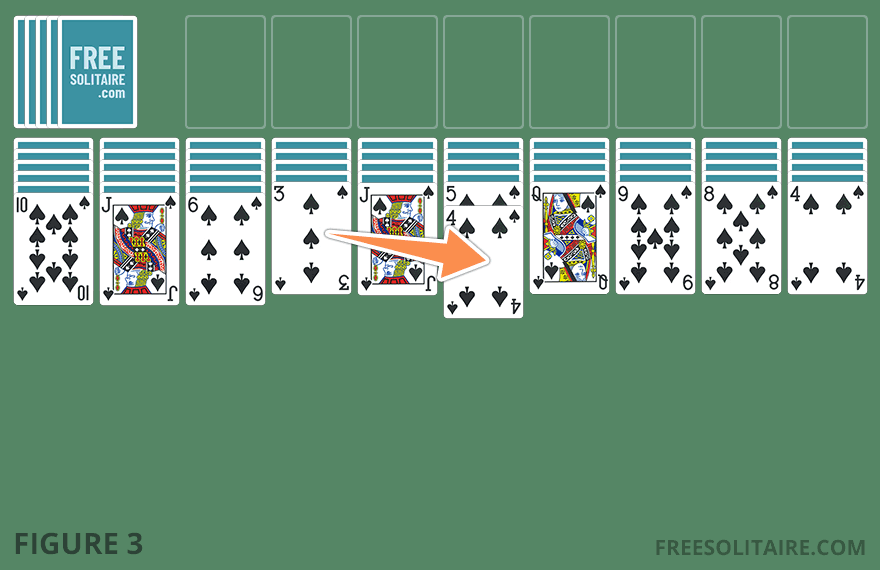
After this, the card under the 4 flips over and uncovers a new card, in this case the black 3 as you can see in Figure 3. We can place this 3 on our sequence (4, 5) and keep going until we complete a full sequence. With no need to worry about suits, your focus is on uncovering hidden cards—a great way to get comfortable with the game before moving on to more challenging levels.
In the 2-suit and 4-suit versions things can get a lot trickier. You can still stack cards in descending order, like placing a 9 of Hearts on a 10 of Spades, but only same suit sequences can be moved together. For example, you can move a group of 10, 9 and 8 of Spades, but not if one of them is a different suit. The main difference between 2 and 4 suit versions is the challenge, 2 suits are manageable, but 4 suits demand careful planning since you have twice the suits to clear.
Continue with the above steps until there are no more moves left...
Out of Moves? Dealing from the Stock
Once you run out of possible moves in the tableau, clicking the stock cards in the top-left corner will automatically deal a new card onto each tableau column. You have five deals per game, so use them wisely and make sure there are absolutely no moves left before dealing new cards, or you might find yourself stuck later in the game.
There is one special rule: you can only draw cards from the stock if all tableau columns have at least one card so be sure to fill all empty columns before dealing new cards.
Using Empty Columns
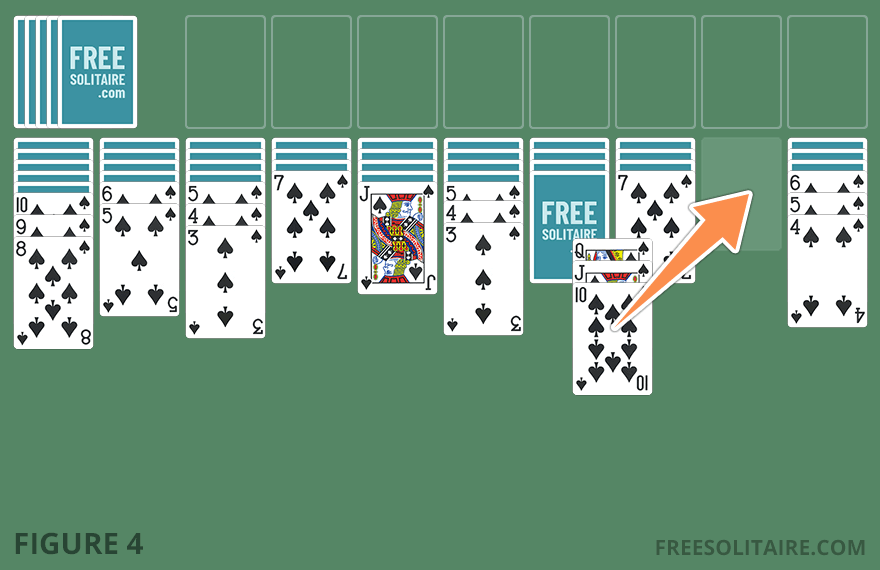
Empty columns can be very useful. You can move any card or sequence into one. In Figure 4, I moved the sequence Q, J, 10 into an empty column, which gave me more space to rearrange cards and uncover hidden ones.
Winning Spider Solitaire
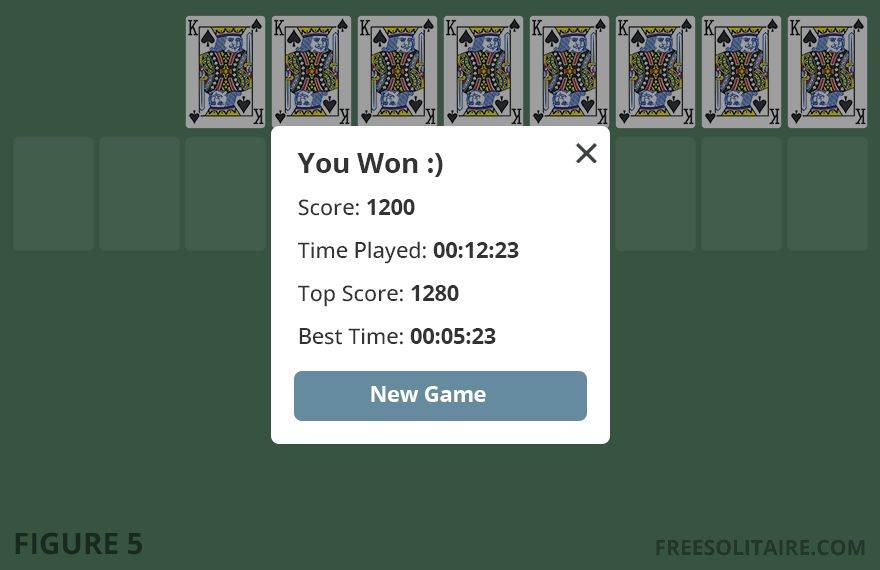
With all the above rules in mind, we can finish the game. To do that, we need to fill all the foundations. A completed sequence (King to Ace in the same suit) automatically moves to one of the foundation piles. Clearing these sequences creates space in the tableau, making it easier to progress. Once all sequences are cleared, the game is won and a score screen pops up, as shown in Figure 5.
Scoring
The version on FreeSolitaire.com uses the official scoring system developed by Microsoft. Each game starts with 500 points. Every move, including undoing or dealing from the stock, deducts one point. Completing a full sequence (King to Ace) earns you 100 points.
Example: If you finish a game in 100 moves, you subtract those moves from 500, leaving you with 400 points. Adding the 800 points earned from the 8 completed sequences, your final score would be 1,200.
Strategy
Spider Solitaire is as much about patience as it is about strategy. The more you play, the better you will get at managing sequences, using empty columns to your advantage and timing your stockpile deals. Looking for more tips? Check out our Tips and Strategies page for extra insights into improving your gameplay.
So are you ready to give it a try? Open up your next game, put these rules into practice and see how far you can go. Have fun and good luck!
